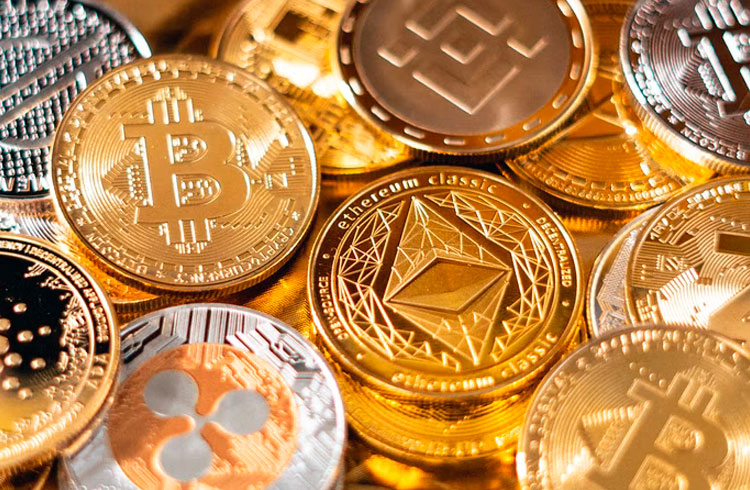What is Terra?
4 min readTable of Contents
What is terra? Terra is a decentralized financial payment network powered by scalable, algorithmic stablecoins.
What is Terra?
Terra is a protocol and financial ecosystem focused on payments with algorithmic and scalable stablecoins linked to real world fiat currencies.
The protocol was developed by Terraform Labs in January 2018. Terraform Labs is a Korean blockchain company founded by entrepreneurs Daniel Shin and Do Kwon. The two key components of the Terra ecosystem are its stablecoins, known as “Terra currencies” and the native token LUNA. The balance of these two components is supposed to be analogous to the way in which the Earth (Latin: Terra) and the Moon (Latin: Luna) rely on each other for gravitational stability and rotation.
While the ecosystem currently supports multiple Terra currencies, including those tied to the South Korean won, the Mongolian Tugrik, and the MMR SDR basket, Terra’s core product is its native stablecoin. TerraUSD (UST). It is currently the fifth largest stablecoin on the market, UST is one of the fastest growing assets in the industry and reaches a market capitalization of $ 2.8 billion within one year of its launch.
How do Terra Stablecoins work?
Unlike other decentralized algorithmic stablecoins, such as DAI from MakerDAO, Fei and AMPL from Ampleforth, which rely on excess collateralization, fractional reserves or rebasing, Terra stablecoins use an elastic monetary policy to ensure price stability and growth.
Elastic monetary policy means that Terra stablecoins achieve price stability by adjusting their supply to real-time fluctuations in demand.
In order to create a UST, users must burn the equivalent amount of LUNA tokens in dollars. For example, to create 1,000 UST, at the current market price of LUNA at $ 27.25, they would have to burn 36.69 LUNA. On the other hand, to create a $ 1,000 LUNA, a user would have to burn 1,000 USTs.
Terra stablecoins essentially maintain price stability through the use of market forces.
The LUNA token serves as a volatility absorption tool that also generates rewards through transaction fees. LUNA is used to verify Terra transactions through staking, and LUNA stakeholders also benefit from the transaction fees charged by the protocol.
How does the protocol work?
Terra is built on the Cosmos SDK and uses the Tendermint Delegated-Proof-of-Stake (DPoS) consensus mechanism.
Although the protocol currently relies on 130 validators, determined by who has the largest delegated share, the network is expected to increase to 300 validators in the future. The primary role of Terra validators is to authenticate, clear transactions, and secure the network by running entire nodes to commit blocks. Simply put, validators in Proof-of-Stake-based blockchains play a similar role as miners in Proof-of-Work-based blockchains secure the network and help maintain consensus.
To become a Terra validator, users must either lock their own LUNA tokens for a minimum of 21 days or have other users delegate their LUNA coins. LUNA stakers can delegate their tokens to validators to become delegators.
Delegators and validators have the same function and share the same benefits and responsibilities. This means that delegators receive part of the fees received by validators. In the case of Terra, validators and delegates earn remuneration through transaction fees and incineration.
Decentralization, governance and the future
With just a few hundred validators, Terra is not the most decentralized blockchain. Like other DPoS-based blockchains such as Cardano, EOS and TRON, Terra optimizes performance, scalability and interoperability while compromising on decentralization.
While Terra is still primarily developed and maintained by Terraform Labs, LUNA token holders can participate in management through staking. Terra validators can submit proposals to improve the protocol and vote on changes using their stacked LUNA coins as a voting force.
Some protocol changes, such as blockchain parameters, distribution of rewards, transaction fees, and Terra box office expenses, can be applied automatically, while other more complex designs are implemented manually by the main development team at Terraform Labs once the community votes.
Conclusion
With interoperable and scalable stablecoins such as UST, simple savings protocols such as Anchor, and the Mirror synthetic stocks trading platform, Terra is well positioned to expand and create a stable and intuitive ecosystem.
This approach has proved successful so far. Terra is currently the 14th largest cryptocurrency in the world and a total value locked between protocols of $ 8.6 billion. With the imminent introduction of the long-awaited Columbus 5 upgrade, which will introduce a deflation mechanism for LUNA similar to the ETH EIP-1559 update, Terra is ready to continue growing.






